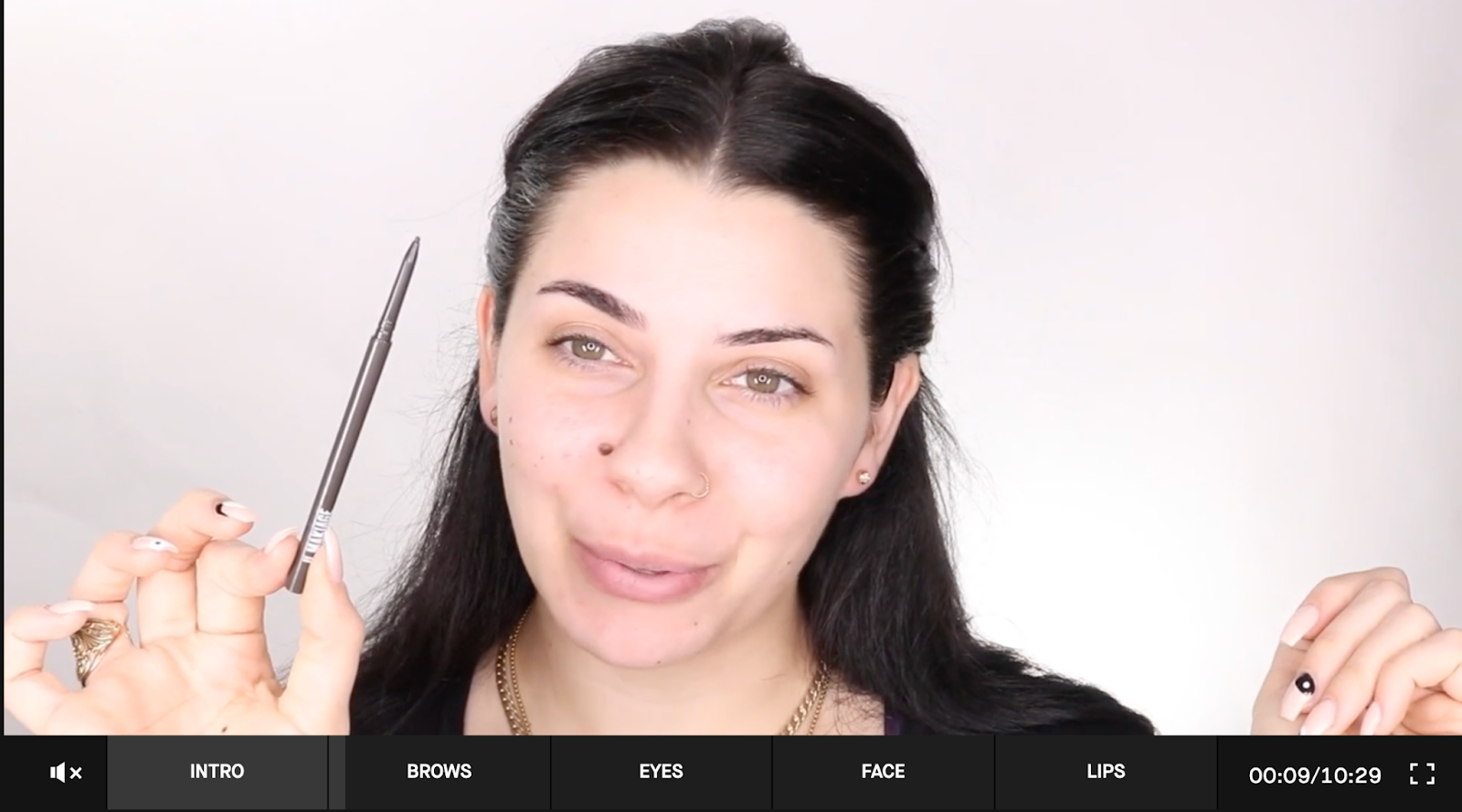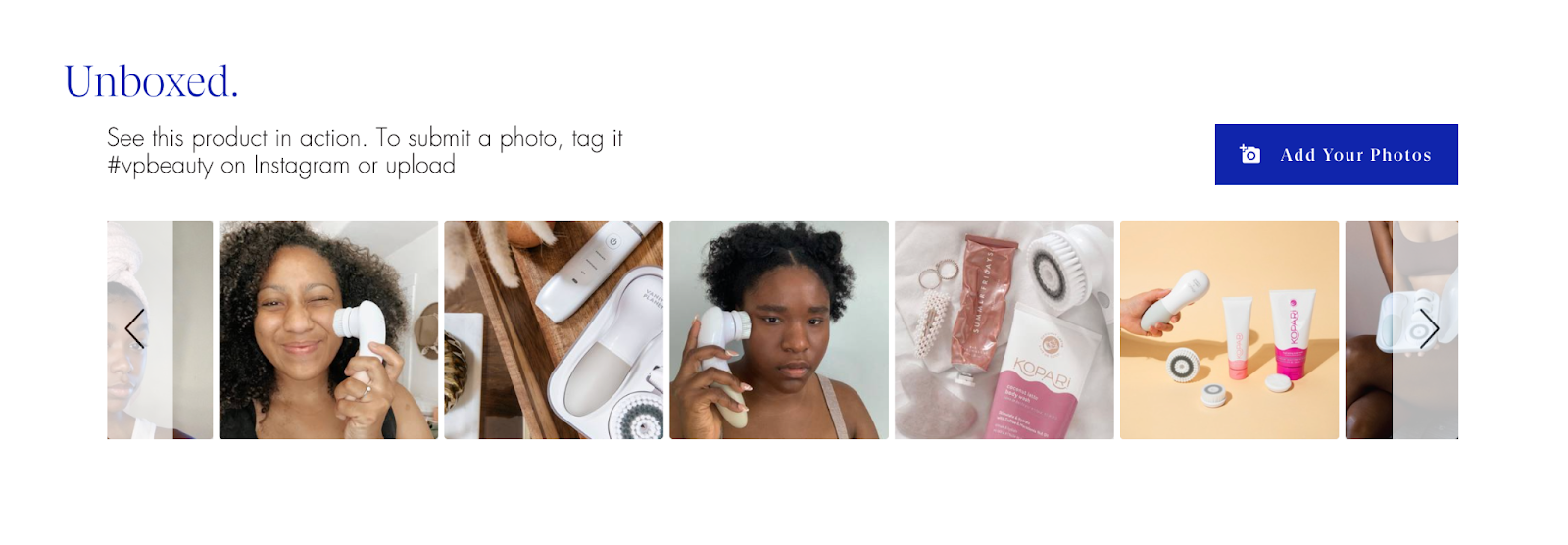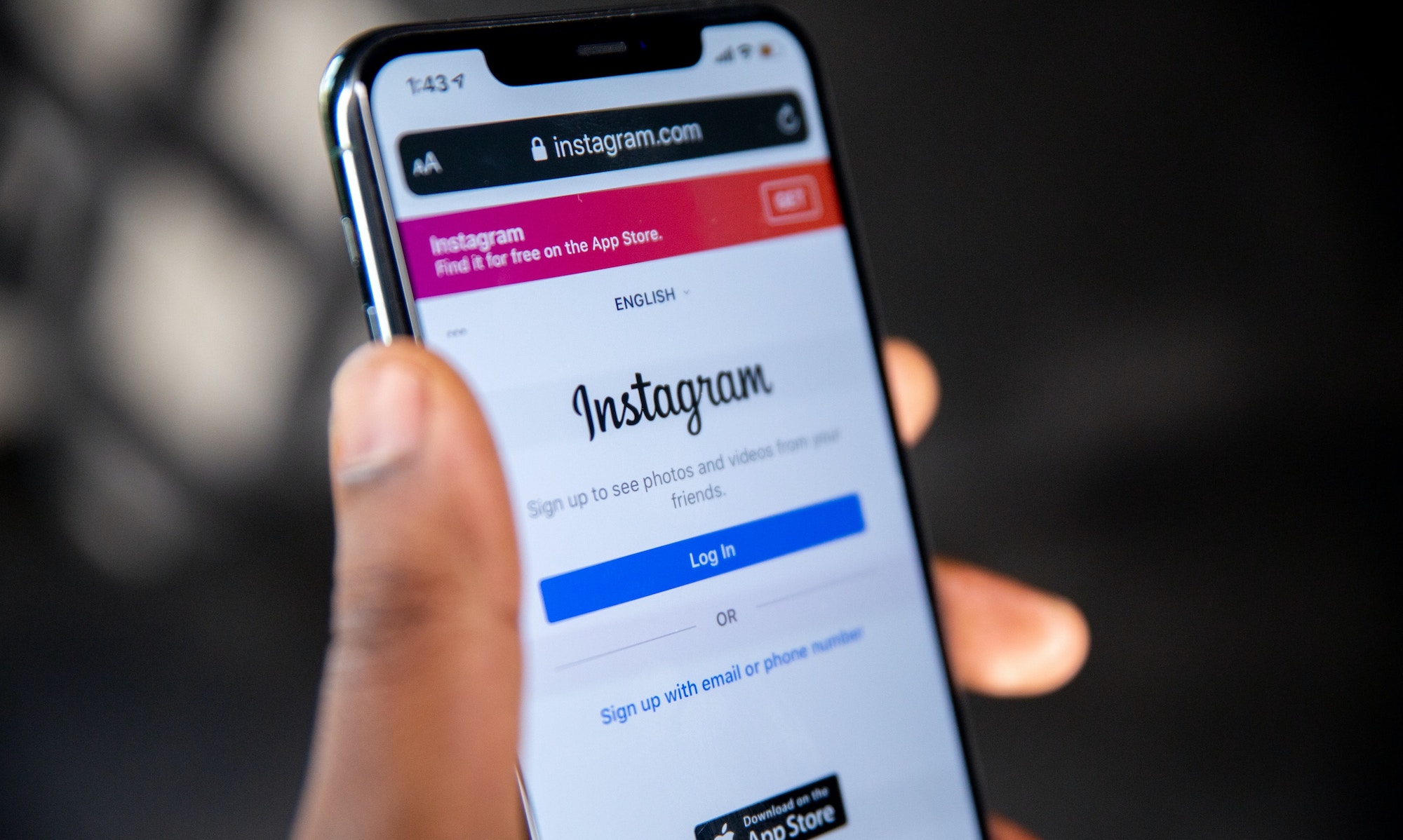Want to boost website conversions? Fill it with user-generated content!

Listen to this article:
—
Let’s start with a quick game. It’s called “Who do you believe?”
- Allmax Nutrition -OR- Brianne (@bkfitx), super fit and uses Allmax products religiously?

- Drunk Elephant -OR- beauty editor Courtney Higgins highly recommends Drunk Elephant’s Virgin Marula Face Oil.

- Babe Lash -OR- personal shopper and lifestyle influencer, Katie Hillstead, who posts regularly about the products she adores?

My guess is you picked Brianne, Courtney, and Katie over the brand. Am I right? Research suggests I’m right, considering 92% of consumers trust recommendations from people they don’t even know over branded content.
Consumers (especially ones that are also influencers/Creators) try out products all of the time. When they find one they like, they share their opinions with friends, family, and social media followers.
Take lifestyle influencer Katie Hillstead, for example. She says, “I started sharing products I was finding and loving on social media almost three years ago. I realized that when I find something good, I tell all of my friends about it anyway, so why not monetize it? But, I promise my followers to never share about a product and not be genuine in my review. Companies send me products all of the time, and I am always upfront that I will only post if I love the product.”
The primary benefit of user-generated content (UGC) for brands is that it directs customers—who you may never find through other marketing initiatives—right to your product pages. And, it influences them to buy.
Stats show 93% of buyers find Creator helpful content when making a purchase. Want anecdotal evidence as well? This week alone, I’ve already purchased two products (a pillow and a pre-workout) that Katie recommended. Not to mention some killer sunglasses.
But, the question isn’t whether or not UGC works. It does.
The question is, how can brands more effectively leverage UGC to boost sales?
Let’s take a look at some brands that are disrupting traditional e-commerce website design by creatively infusing UGC into the pages of their websites.
But first! Why should brands optimize their websites with UGC?
It’s simple math. Using UGC is an undeniably powerful conversion tactic, and the place where most conversions occur is on your website.
Put two and two together, and you have created an online sales power tool.
As part of my research, I spoke with Natalie Staub, Co-founder and CMO at Radd, and Senior Lecturer in Digital Marketing and eCommerce. She couldn’t be more explicit about the overall effectiveness of strategically placing Creator content where it counts most—your product pages.
“At Radd, we gather UGC in the form of post-purchase customer stories and help brands post these stories to their websites. Customers love to share their affinity for brands, using their unique voice. We’ve found that this type of UGC creates a unique brand culture and drives purchases, community, and loyalty. UGC is a pot of gold for every brand.”- Natalie Staub, Co-founder and CMO at Radd
Building a community and boosting sales aren’t the only benefits of incorporating UGC into a website, explains Staub. She also talks about the powerful aspect of promoting inclusivity when you gather UGC that represents different voices.
“I interviewed some customers of a brand that uses Radd to gather UGC. I wanted to hear from these customers and know what it felt like to have their stories featured on the brand’s website. One customer said she didn’t usually see models that looked like her—that had her same brown skin on websites. So it was special for her to see herself—someone from Nepal—featured on the brand’s website,”-Natalie Staub, Co-founder and CMO at Radd
UGC works online to boost conversions. But, more importantly, it builds community. As such, it’s shocking how many ecomm brands still rely on traditional “take our word for it” website copy that consumers consistently side-eye.
A more recent—and effective—approach that some innovative DTC brands are taking is to infuse the customer and Creator experiences right where purchases take place on the website.
Here are some excellent examples of optimizing websites with UGC from brands that are getting it right.
Featuring UGC on its homepage to introduce, explain, and sell products
Il Makiage is a make-up and skincare brand that understands the power of UGC. As such, the first interaction you have with its website is a Creator video. Specifically, the website’s hero image features rotating Creator make-up transformation videos like this video from Creator Diana Abarajaas.
If you like the transformation video, you can click on the Creator’s IG username and see more brand-related UGC from the respective Creator.

The hero image isn’t the only place where Il Makiage uses Creator videos. Il Makiage also features trending looks on its homepage from other top influencers that use Il Makiage products.

You can click on any trending looks and see a video tutorial of how to use the products to create a gorgeous look.

What’s more, the video has tabs, including “Intro,” “brows,” “eyes,” “face,” and “lips.” That way, you can skip right to the part of the Creator video that interests you most.
Takeaway: Consumers believe user-generated content over the brand voice every time. Do yourself a favor and put Creators in the driver’s seat on your home page. In other words, let Creator content do the hard work of selling your products for you.
Incorporating social reviews and videos into PDPs for product endorsement
Axel Glade
Axel Glade solves a unique problem—ear wax build-up—with products that work better than a traditional Q-tip, or so the brand says.
But, good news! Axel Glade’s customers also tout the effectiveness of this new ear cleaning tool in the form of online reviews and post-purchase videos. And Axel Glade uses both of these types of UGC to enhance its website.
When you click on one of Axel Glade’s product description pages, you can read online social testimonials from verified customers.

The use of reviews is incredibly strategic, considering 83% of consumers say user-generated reviews on landing pages lend credibility to a brand.
While adding user-generated reviews to its website, Axel Glade doesn’t stop there. The brand also recently added post-purchase customer videos to its website’s product description pages.

I spoke with Nichole Elizabeth DeMeré, CMO at VideoWise, and they shared with me some of Axel Glade’s results after adding customer videos to the PDPs.
After posting video reviews to the Spade PDP, Axel Glade saw:
- 1,381 hours and 37 minutes of additional time on the site from May 17 to June 16 alone
- 346 influenced orders
- 5 minutes 55 seconds average video watch time
- 13,968 videos watched
Headphone Zone
Axel Glade isn’t the only brand that has experienced success with this strategy. DeMeré also shared results with me from Headphone Zone and FacesCanada.
Headphone Zone also started collecting customer YouTube reviews and adding these reviews to their product pages.

The results were astounding. Headphone Zone saw:
- 1,106 hours and 37 minutes of additional time spent on the site
- 257 influenced orders
- 6 minutes 59 seconds average watch time
- 9,508 videos watched
FacesCanada
As a make-up, accessories, and skincare brand, FacesCanada took a slightly different approach to add UGC video content to its website than Axel Glade and Headphone Zone did.
Instead of adding post-purchase video reviews, FacesCanada focused on gathering “how-to” videos from top influencers and creating individual pages built around that influencer.
Take FacesCanada’s influencer page from Barsha Patra, for example.

Notice. Instead of designing the page around the product and then using the Creator to promote the product, the brand builds the page around the Creator and her recommendations.
When you visit the website, you can watch Barsha’s video and then scroll down on the page to shop the products Barsha used to create this exact look.
It’s a genius way to build a sales page, and the results endorse its effectiveness. After creating these pages around influencer videos, FacesCanada saw the following results:
- 198 hours and 29 minutes additional time on site
- 287 influenced orders (5 seconds of a video watched, then they *fully* check out, not just add to cart)
- 2 minutes 3 seconds average watch time
- 5,786 videos watched
Takeaway: If customers post positive reviews about your brand via social media and create YouTube reviews or tutorials, add those videos and reviews to your PDPs. Again, leverage the sales power of your customers and Creator voices.
Leveraging UGC from diverse Creators to promote inclusivity
Opatra is another brand that’s crushing it when it comes to using UGC. The first way Opatra uses UGC is unique and worth a shout-out.
When you land on the Opatra home page, you’ll see a bar with Opatra’s latest trending products. This bar includes five different animated circles with links to live social videos from Creators talking about Opatra. It’s unique. It’s cool. And, the videos are helpful.
Natalie Staub talks about the effectiveness of these live stories.
Staub says, “With live stories, an influencer can invite their social followers to join them on a live shopping spree, and users can access the shopping spree right from the brand’s website. The added advantage is these live videos drive quality traffic straight to the site, and the experience includes a favorite influencer, making it fun, exciting, and promoting brand engagement.”

But, these live videos are good for more than driving brand awareness. You’ll also notice Opatra has a wide range of videos on its website from diverse Creators.
When I was interviewing Black Creators for a recently published Banknotes article, several of these Creators told me they started their social accounts because they weren’t seeing enough representation of people of color and Black people from brands they follow.
Opatra makes it a priority to add unique and diverse voices to its website. When featuring UGC from Creators and when capturing post-purchase customer stories, Opatra focuses on inclusivity.
Natalie Staub from Radd told me that when she was interviewing Opatra’s customers, someone told her, “I feel that this brand cares about me and cares for people who look like me. They are inclusive. I feel part of this special brand community where I can share with other customers that are looking to meet like-minded individuals that they count and their stories count, too.”
Not only does adding diverse UGC to its website promote inclusivity, but it generates results. Staub shares that Opatra saw an overall conversion of 15% due to adding customer stories to the website.
Takeaway: UGC isn’t only about boosting sales. I mean, it will boost sales. But it will also help increase the representation of historically marginalized communities, and that’s a win in and of itself.
Marrying the unboxing social phenomenon to its website
Unboxing videos and user-generated unboxed product shots have taken the social media world by storm.
While the jury is still out on whether creators love or hate to unbox products, there’s no contesting that brands love it when Creators feature them and consumers enjoy watching.
1 in 5 every consumer has watched an unboxing video. Google quantifies this with a fun comparison.
Google reports that people’s amount of time watching unboxing videos is equivalent to someone watching the famous flick, “Love Actually,” 20 million times.

Additionally, unboxing videos influence consumer purchases. Sixty-one percent of one study’s participants reported that an unboxing video convinced them to purchase a product.
Unboxing videos and unboxing Creator product shots are a big deal.
While unboxing traditionally takes place on social media platforms, Vanity Planet merges this social phenomenon with its website content as its sales and marketing strategies.

Rather than letting unboxing videos and photos live exclusively on social media, Vanity Planet embeds these customer product shots right into its product pages.
If you land on the website and want to participate in the fun, here’s the great news. You can add your photo directly to the “Unboxed” section of the Vanity Planet website.
Asking customers to upload their content to your website is particularly strategic. This is especially true when you consider Natalie Staub’s comments above and Stackla’s recent report data.
Stackla found that UGC was 8.7X more impactful than influencer content and 6.6x more influential than branded content. Seventy-nine percent of respondents reported that UGC highly impacts their purchasing decisions.
Again, UGC is a powerful website conversion tool.
Combining a bit of everything in one, celebrity collections + Creator content + UGC
Alo takes a unique approach in terms of leveraging a wide range of influences. How? By combining celebrity, Creator, and customer content into its product pages. Here’s what I mean.
Take the Alo Kendall Jenner collection, for example.
If you click on the “Kendall Jenner’s Looks” link, Alo will direct you to Kendall Jenner’s curated content. The page looks like this.


You’ll first see a pic of Kendall, showing off a series of cute Alo outfits—outfits that will look good on the lay consumer, not only a supermodel.
How do you know it will look good on people that aren’t Kendall Jenner? That’s right. UGC.
Alo combines Creator content and customer reviews to show how items in this particular celebrity collection might look on others.
For example, if you click on “Varsity Tennis Skirt - White,” Alo redirects you to the product page. You’ll first see how the skirt looks on yet another model (sheesh, enough with the models). But, it’s about to get more interesting.

If you scroll down past the product images and description, you’re met with style inspiration from other more accessible yet still highly influential IG Creators—all donning the same Alo skirt.

As a bonus, these Creator images are optimized with shopping tags that allow you to see other related Alo items and add them to your shopping cart.
Keep scrolling. This is where you’ll see user-generated reviews from other customers.
Who doesn’t love user reviews?
Stats show that nearly everyone loves reviews. In fact:
- 9 in 10 customers read reviews when making a purchase,
- Almost 55% of customers read at least four reviews, and
- 58% of global consumers have left an e-commerce store without purchasing because the site didn’t have customer reviews or photos
Reviews on websites make a difference.
These Alo reviews, in particular, go above and beyond by eliciting details that matter. They ask about overall fit, body type, height, and size and allow reviewers to write a detailed description of their experience (good or bad) with an item.

Alo is on to something. Leveraging a celebrity’s popularity, including IG Creator content, and adding user-generated reviews in one product collection is a killer strategy.
Highlighting customer stories and using customer IG posts as product shots
Like Opatra, Barry M also promotes customer stories on its website to encourage social shares, a sense of community, inclusivity, and increased website traffic.
When I talked to Natalie Staub about how Barry M uses live videos from Creators on its website, here’s what she had to say about the strategy.
“When we researched the sharing of live customer video results for Barry M, we learned that customers loved to see their stories featured on the Barry M site. When customers saw their stories on the site, they would take a screenshot and share it across their social media accounts. They felt super proud of their content and happy to be part of the brand community,” she says.
Sharing live customer stories on its website isn’t the only way Barry M optimizes with UGC for increased conversions.
Like Il Makiage and FacesCanada, Barry M also captures Creator “how-to” videos from social media and posts these tutorials on its website. Barry M’s strategy varies slightly from the other two brands.

For Barry M, when you click on one of the videos, the “how-to” video tutorial will start playing. You’ll also see that Barry M has added a “view products'' button directly on the Creator video.

Suppose you click on the “view products” button at any time while watching the video. In that case, a new page populates within the Creator video, displaying the Creator’s products in the tutorial.

You then have the option to click on any one of the products, learn more on the product description page, and add it to your shopping cart.
Using optimized Creator videos as a sales tool has helped Barry M drive large traffic to its product pages. Natalie Staub reports that Barry M has seen traffic conversions of 22% on some of the product pages after adding one of these Creator make-up application “how-to” videos.
Another notable and unique way Barry M uses UGC on its website is by adding customer photos as its product images.
Look at the “Fresh Face Liquid Foundation” product shots, for example. There are twenty different foundation shades. You’re going to want to see what these various shades look like on different people—namely, a person whose skin tone matches yours.

As you click through the different foundation tone options, the product images change to match the respective skin tone.
The best part and where UGC comes into play?
These product images are captured from the Instagram accounts of Barry M product users. Check out this side-by-side. One is Barry M's product image, and the other is the Instagram post from health and beauty Creator, @blackdiamond8686.


Spoiler alert! They are identical. Identical and authentic.
What’s the most important thing to remember?
When it’s time to update your website, here’s the one thing you need to remember.
It’s not about you.
Your customers don’t typically care about your promises or your origin story (unless it relates to them). Consumers are smart and they will rarely take your word for it.
But, do you know who they will believe?
Each other.
Consumers trust the voices, endorsements, and recommendations of other diverse groups of consumers—be they Instagram users with 12 followers or someone like Kendall Jenner.
If conversions are lagging, now is the time to tap into your customer base and allow a wide range of Creators and customers to share their stories.Take those stories and place them right where it matters most for your brand. Your website.















.jpg)







.jpg)
.jpg)
.jpg)
.png)



.png)
.jpeg)


























































.jpg)




















